Immigration (PDF)
by Elizabeth Sullivan
Cleveland long has been a city of steel and autos, a city that boomed with ore men, oilmen and corporate titans and then busted not long after the oil price shocks of the 1970s helped push steel onto life support. It’s a city whose burning river sparked the cleanup of all the Great Lakes, a place that’s finally willing to spark the reinvention of itself through biotech, high-tech, wind energy, green jobs, and medicine.
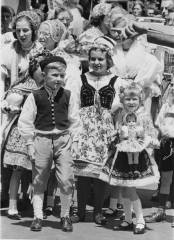
But through all these years—even going back to 1796 when Moses Cleaveland and his team of land speculators arrived as descendants of English settlers—it’s also been a city of immigrants and migrants. Immigrants from England, Germany, Ireland, Poland, Slovenia, Slovakia, Hungary, from the Ottoman Empire, and Lebanon, from the south, including the great African-American migrations of the early 1900s, from Lithuania, Latvia, Belarus, Puerto Rico, and Mexico, from the Czech Republic, Romania, Ukraine, Russia, and Italy, from Albania, the ex-Yugoslavia, Guyana, and Jamaica, from Korea, China, and India, from Vietnam, the Dominican Republic, and South Africa, from scores of other nations, and from a mix of religions, Judaism to Lutheranism, Catholicism to Buddhism.
These continuing waves of new arrivals helped set Cleveland’s cultural tone. They established its first hospitals, houses of worship, and other institutions. They settled neighborhoods that bear their marks to this day in architecture and urban landscapes.
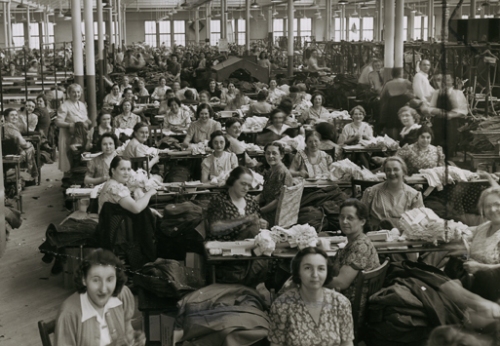
Immigrants stoked the great open hearth furnaces of Cleveland’s steel mills and sewed the fabrics that made the city an early center of the garment industry. They worked the docks and the railroads. They brought a multiethnic flavor to city politics—ward heelers heeling by last name and country of origin—but they also created one of the great, high-octane metropolises. They did that through the sheer audacity of what it means to be an immigrant, to leave the familiar place of home and family to find a new start—and then to work together, organizing sometimes by national origin, by family roots, by religion, by language to help seed the small businesses and family stores that propelled jobs from the factories to the street corners.
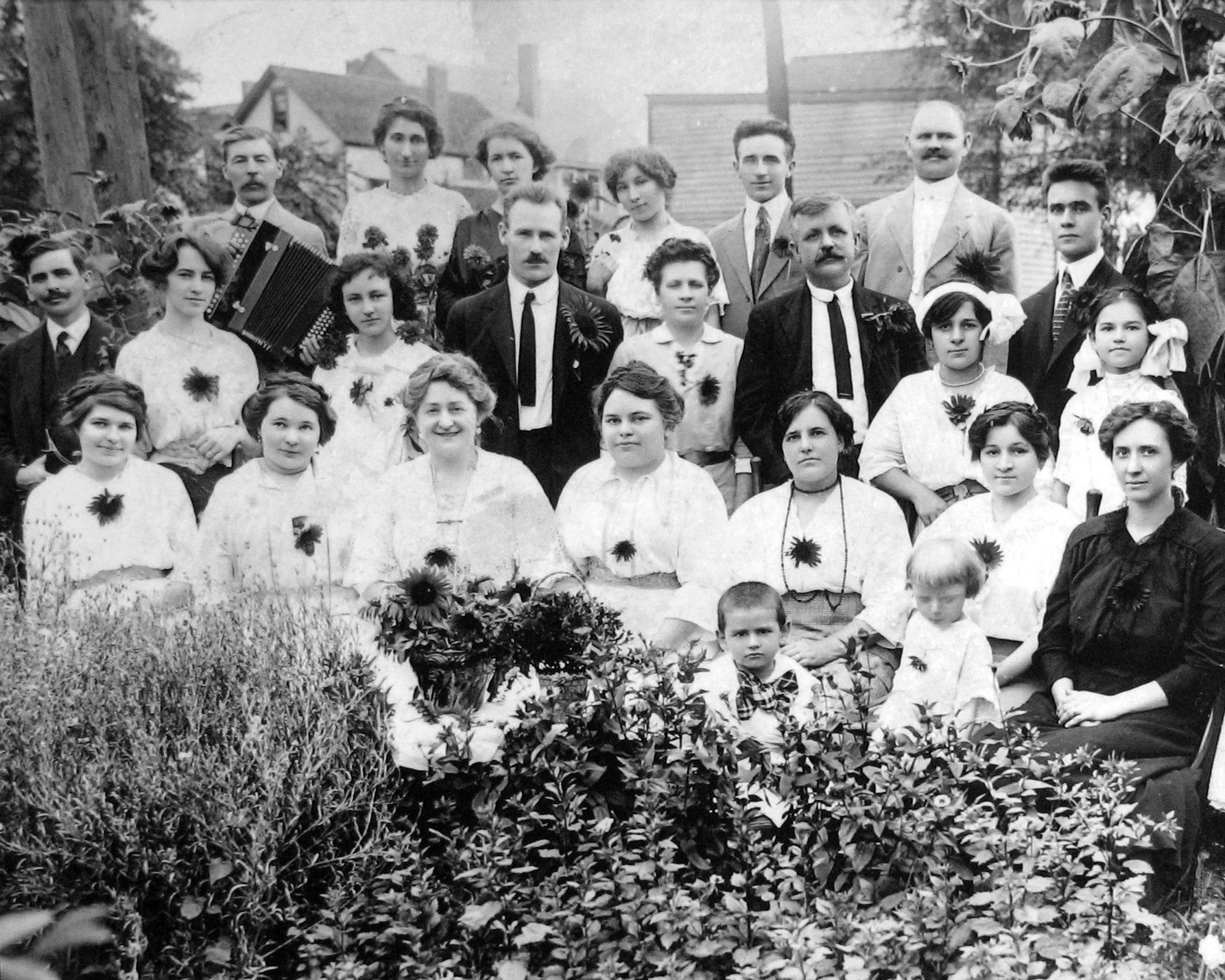
At one time, Cleveland was home to so many Slovenians that it was the largest “Slovenian” city in the world, surpassing Ljubljana, capital of present-day Slovenia; to so many Hungarians that it was the second largest “Hungarian” city in the world, after Budapest; and to three times as many Slovaks as lived in Bratislava, now capital of an independent Slovakia but that, in 1910, was a largely Germanic and Hungarian city.

They brought their art and music with them: Following the Hungarian and Slovak factory workers to Cleveland were Roma musicians who for decades made Cleveland the New Orleans of the north, their rousing musicians’ funeral processions and plaintive nightclub Gypsy music part of the stimulating mixture of peoples, cultures, and religions that gave the city its flair.
 So, too, the progenitors of Cleveland’s diverse button-box accordion and polka music, with Polish, Italian, Czech, German, and Croatian styles, but whose most important heir was Frankie Yankovic and his Cleveland-style Slovenian polka. Yankovic was the son of Slovenian immigrants who’d met in a West Virginian lumber camp and moved to the Collinwood neighborhood of Cleveland in the early 1900s, reportedly after his father’s bootlegging business came to the attention of West Virginia police. It was in Cleveland that the young Yankovic learned the accordion from one of the boarders his father took in to supplement the family’s income from construction work. The National Cleveland-style Polka Hall of Fame was established in Euclid in 1987, the year after Frankie Yankovic became America’s first recipient of a Grammy for polka music.
So, too, the progenitors of Cleveland’s diverse button-box accordion and polka music, with Polish, Italian, Czech, German, and Croatian styles, but whose most important heir was Frankie Yankovic and his Cleveland-style Slovenian polka. Yankovic was the son of Slovenian immigrants who’d met in a West Virginian lumber camp and moved to the Collinwood neighborhood of Cleveland in the early 1900s, reportedly after his father’s bootlegging business came to the attention of West Virginia police. It was in Cleveland that the young Yankovic learned the accordion from one of the boarders his father took in to supplement the family’s income from construction work. The National Cleveland-style Polka Hall of Fame was established in Euclid in 1987, the year after Frankie Yankovic became America’s first recipient of a Grammy for polka music.
The Cleveland Public Library showed the adaptability that was to make it one of the country’s foremost research libraries by quickly adding foreign-language collections to its offerings, Starting with German, and then Yiddish, Italian, Hebrew, Czech, and Polish by the early 1900s—expanding rapidly into other languages, from Hungarian and Romanian to Vietnamese and Swahili. According to the Encyclopedia of Cleveland History, the city’s library system was the first in the country to include Belorussian language materials, starting in 1973; by 1995, its foreign-literature offerings, with books in 45 languages, as well as a variety of foreign-language periodicals, tapes, and cassettes, were, according to the online Cleveland Encyclopedia article by Jerzy J. Maciuszko, posted at ech.cwru.edu, the most extensive for a public library in the United States.
The presence of so many diverse peoples and religions, and their connections to home countries, also made Cleveland a bridge to world politics. It was in Cleveland that Czechs and Slovaks came together in 1915 to agree, via the Cleveland Agreement, on a union of what was to become Czechoslovakia. Then there was the rise to leadership positions within Cleveland’s Jewish community of two influential rabbis who were fierce zionists, Rabbi Barnett Robert Brickner of the Anshe Chesed congregation and, especially, Lithuanian-born Rabbi Abba Hillel Silver, who led the temple in Cleveland for more than four decades. Their intense advocacy for the state of Israel helped win U.S. and U.N. support for creation of a Jewish homeland.
Later in the 20th century, financial support from some ethnic groups in Cleveland became a factor in nationalist movements back home, from the IRA and the Irish Nationalist cause against the British in Ireland, to the 1991 Croatian independence struggle. The significance of Cleveland contributions drew to Cleveland two Croatians who later became Croatian president, Franjo Tudjman and Stipe Mesic, as well as Gerry Adams and others from Sinn Fein’s top political leadership in Northern Ireland.
Today, as Cleveland tries to reinvent itself as a smarter, savvier, more highly educated, more adaptable 21st-century city, it must not dismiss or overlook the core energy and drive that defines the immigrant experience. Immigrants still are helping to make our neighborhoods tidier, livelier, and more diverse. They are bringing economic focus and jobs. Immigrants—particularly highly educated immigrants, but also entrepreneurial family groups and immigrants who continue to act as a bridge to their home countries for attracting businesses and investors—may be the most overlooked economic drivers, both in Cleveland and the nation, of urban revitalization and future wealth.
Cleveland can do much—and much, much more than it’s doing now—to attract and nurture this sort of immigrant. Indeed, such immigrants already are effecting change in Cleveland. If you look closely, you may find them transforming a neighborhood near you.
History of Immigration in Cleveland
As long as Cleveland was a sleepy backwater, it attracted few immigrants apart from those early settlers, who descended largely from original English colonists.
But the Ohio and Erie Canal, which opened in the early 1830s, made Cleveland the important terminus of an economic lifeline extending deep into the country’s heartland and linking the city into a nationwide water transport network. Helped by industrial innovations from steel barons who pioneered what could be called the Cleveland system of manufacturing, in which factories no longer had to be located right next to mines or other sources of raw materials, but could take advantage of water transport to move heavy cargo and finished goods long distances, Cleveland boomed.
The expansion of the railroads reinforced the city’s manufacturing might, including in chemicals and oil refining—as did the Civil War, with its demands for iron and steel. Cleveland’s population exploded, growing almost 90-fold from 1830 to 1870, the year John D. Rockefeller incorporated his Standard Oil company in Cleveland.
From a tiny hamlet modeled on small New England villages with their central squares, Cleveland had transformed into the nation’s 15th largest metropolis by 1870, with nearly 93,000 residents. And it was still growing.
In 1920, with a population that had ballooned to nearly 800,000, Cleveland was the nation’s 5th largest city. The early decades of the 20th century were the halcyon days of the city’s economic power, nationally and internationally, a time during which immigration success paralleled economic success.
Immigrants were attracted not just by jobs, but by earlier waves of immigrants who brought familiar foods and other cultural attributes with them. Yet immigration was not just a mirror for Cleveland’s power. Immigrants themselves also enhanced the city’s economic prospects through their work ethics, craftsmanship, deep sense of social and religious structure, and other skills.
Many of Cleveland’s earliest hospitals were started by German church groups, including the former German hospital in Fairview Park, now Fairview Park Hospital, and Lutheran Hospital on the near West side. So were its breweries.
Well-educated dissidents from the unsuccessful 1848 revolutions in Europe and their descendants put their distinctive mark on the intellectual life of Cleveland. One such was physicist Albert Abraham Michelson, whose Jewish family emigrated in 1855 from Strelno, Prussia (later Strzelno, Poland), when he was a toddler, settling first in Western mining camps. In 1907, Michelson became the first American to win a Nobel Prize in the sciences, for his physics experiments at Cleveland’s Case School of Applied Science, measuring the speed of light.
The skills of old-world craftsmen can still be seen in the stonemasonry of Lakeview Cemetery monuments, many carved by Italian masters who settled in nearby Murray Hill, and the incredible carved wood, iron, and stone work and murals of the city’s ethnic houses of worship, from the intricately carved imported German white oak installed in the 1890s that decorates the interior of the old St. Stephen’s Church on West 54th street—a church for which German craftsmen used locally available wood and iron in place of traditional stone interiors, according to Cleveland Sacred Landmarks by Cleveland State University researchers—to the elaborate carvings and hand-hewn red oak pews lovingly created by Polish craftsmen for the shrine Church of St. Stanislaus in the little Warsaw section of Slavic Village. Not to mention the massive stone blocks hoisted by Italian immigrant brawn that in the 1950s became St. Rocco’s Church on the West side.
Sadly, some ethnic churches with their hand-carved woodwork, marbles, and distinctive stained glass and murals were closed as part of the 2009–2010 retrenchment by the Cleveland Catholic Diocese, in which 50 Roman Catholic parishes in the diocese were closed or merged because of declining numbers of worshippers. The closures were an especially poignant commentary on the relative loss of population in neighborhoods of Cleveland originally settled by immigrants; affected parishes were home to some of the city’s oldest Catholic churches built by Eastern European immigrants between 1880 and 1930—a period when the owners of Cleveland’s mills actively recruited Czech, Polish, Croatian, and other migrants.
Yet the city’s diverse artistic heritage finds ongoing expression in a variety of ethnic arts displays—from the folk-art, costumery, and ceramics of the Romanian Ethnic Art Museum on the West side, the Hungarian Museum in Tremont, and the Czech and Slovak Bohemian Hall on Broadway to the annual Cleveland Fine Art Expo of African-American and ethnic art. A thousand years of Jewish culture in Europe, largely eradicated by the holocaust, is celebrated not just in the city’s temples, but also in the Maltz Museum of Jewish Heritage in Beachwood.
The city’s revitalized cultural gardens along Martin Luther King Jr. Drive from Lake Erie to University Circle now include a restored statue of Marie Curie by Polish sculptor Frank l. Jirouche, an arresting stainless steel bowl-like sculpture entitled “Hearth” that was unveiled in 2008 by Azerbaijani artist Khanlar Gasimov, and, next to it, the local Armenian-American contribution, the 2009 geometric “Alphabet” sculpture by architect Berj Shakarian.
But immigrants to Cleveland didn’t just impact the city’s religious life and its arts and intellectual culture.
Tammany Cleveland
The tight-knit nature of some immigrant groups also translated into influence on city politics, with the Irish in particular adept at turning numbers into political clout. Robert E. McKisson, Cleveland mayor from 1895 to 1898, although himself descended from settlers of probable Scots-Irish derivation who’d arrived in northern Summit County early in the 19th century, ran one of the country’s earliest—albeit, shortest-lived—political machines based upon the tight-knit Irish immigrant community.
Even after that machine unwound at the end of the 19th century, ethnic political power persisted through ward heelers from neighborhoods of immigrants, whether Polish, Italian, Irish, or Hungarian. The ethnic loyalties were reinforced by the tendency of many immigrants to follow in the wake of friends, neighbors, or family, effectively transporting village and kinship loyalties to Northeast Ohio.
Most Irish immigrants to Cleveland, for instance, came from one county in Ireland— Mayo—and many of them were from the even tinier Achill Island off the Mayo coast. In 1995, when Plain Dealer reporter Mike O’Malley asked school children in one classroom on Achill Island to raise their hands if they had family members in Cleveland, almost every child raised a hand. A plaque on the wall of a Catholic church on the island thanked donors to the church’s 1964–1965 restoration, “especially our exiles in Cleveland.”
The tiny hamlet of Aitaneet in the Bekaa Valley of present-day Lebanon exported most of its sons and daughters to just a handful of destinations—Cleveland, Montreal, or Detroit.
Likewise, many of Cleveland’s Italian immigrants traced from a small number of towns in Sicily and the Campania and Abruzzi regions. Gene P. Veronesi in his 1977 book, Italian-Americans and their Communities of Cleveland, cites Josef Barton’s seminal 1975 study of differing patterns of immigration to Cleveland as indicating that half of all Italian immigrants to the city arrived from just 10 villages in Southern Italy. That was in contrast to Romanian and Slovak migration patterns to Cleveland, in which such relationship chains were relatively rare.
For the Irish and Italians and some other immigrant groups, such as Croatians and Slovenians who came from relatively small Balkan enclaves, the propinquity of origin and destination helped solidify political power, and perpetuate ties with the “old country.”
John J. Grabowski of Case Western Reserve University and the Western Reserve Historical Society, the area’s leading expert on immigration and settlement patterns in Cleveland, has charted how these migration chains impacted Cleveland area neighborhoods, for decades drawing waves of related immigrants to certain addresses, intersections, and city areas. These ranged from “Dutch Hill” and “The Angle”—the city’s oldest Irish neighborhood—both on the west side, to the St. Clair (Croatian, Slovenian, and Serbian), Kinsman (Jewish), Cedar Central (African-American), and Buckeye (Hungarian) neighborhoods on the east side.
In Lakewood, the “Bird’s Nest” neighborhood was created more or less as a company neighborhood by the old National Carbon Company (later Union Carbide), which in the 1890s laid out the streets named for birds, as part of a recruitment drive of Slovak factory workers. Some of these settlement patterns persist to this day. The St. Clair neighborhood east of downtown continued to attract Balkan immigrants from Serbia, Albania, Bosnia, and Croatia throughout the Yugoslav wars of the 1990s.
Although the Buckeye neighborhood near Shaker Square now is largely African-American—four of every five residents—2 percent still listed Hungarian ancestry in the 2000 census.
Politicians with Eastern European roots continue to exercise influence: Joe Cimperman, first elected to Cleveland City Council in 1997, is a first-generation Slovenian, as was former Ohio Governor Frank Lausche decades before him. Lausche became the first Cleveland mayor of Eastern European descent, when he was elected in 1941.
Former Cleveland mayor and seven-term (as of 2010) congressman Dennis Kucinich is a second-generation Croatian, while the politician who unseated Kucinich as Cleveland mayor, George Voinovich, who then became a two-term Ohio governor and two-term U.S. senator, is descended from Slovenes and Ethnic Serbs from Croatia.
Immigration continues from Eastern Europe to this day, notably Germans, Romanians, Russians, Italians, and Poles following co-nationals to Cleveland.
In the early 20th century, area steel mills also began recruiting in the Western Hemisphere, primarily in Mexico.
Large-scale Puerto Rican migration to Cleveland and Lorain began after World War II, when area auto and steel plants such as National Tube Company, later part of U.S. Steel, recruited heavily in the Commonwealth, whose residents have been U.S. citizens since 1917 (many serving in the U.S. Armed Forces in both world wars and in every war since).
As of 2008, the U.S. Census Bureau estimated that more than 34,000 people of Puerto Rican heritage or birth lived in Cuyahoga County, making it the 28th largest county for Puerto Rican residence in the United States—and the primary reason the U.S. Justice Department demanded in 2010 that Cuyahoga County begin printing all election ballots in both English and Spanish.
But large blocs of immigrants also have come from the Palestinian territories, Jamaica, Vietnam, Ukraine, China, the Philippines, India, Guatemala, Somalia, West Africa, Bosnia, and Iraq—to mention only some.
The Cuyahoga County Board of Elections began providing Russian and Chinese language speakers in some voting districts. And despite the U.S. Justice Department’s focus on the voting rights of Spanish-speaking voters of Puerto Rican descent, the Cleveland neighborhood with the highest percentage of residents with deficient English skills in the 2000 census was the Little Asia neighborhood of Goodrich/Kirtland Park on the near east side, where Chinese and other East Asian languages are the impediment. That neighborhood ranked first in Cleveland in 2000 both in number of foreign-born residents and in number of Asian immigrants, the bulk from mainland China.
No Welcome Mat for Immigrants
All has not been smooth sailing for new arrivals to Cleveland, even in the years when immigration boomed. Immigrants to Cleveland confronted discrimination in housing, employment, and education, and attempts by some white Protestant groups to acculturate other groups, both linguistically and religiously. Often, immigrants experienced infighting within their own immigrant communities over ideology and religion.
The Cleveland Encyclopedia, prepared for the city’s bicentennial in 1996, says that bilingual education was offered in Cleveland public schools as early as 1870—not for altruistic reasons, but as an attempt to induce the city’s large Germanic population to abandon nationality schools taught only in German and to assimilate to English-language education instead.
Protestants sent “missions” into ethnic neighborhoods while the city’s Catholic diocese, under its first bishop, French-born Louis Amadeus Rappe, resisted in the late 19th-century setting up ethnic parishes—until lobbying of Rome by the city’s Germans and Irish ended the prohibition.
By 1908, The Cleveland Encyclopedia reports, more than half the city’s Roman Catholic parishes were “nationality” parishes, rather than neighborhood ones.
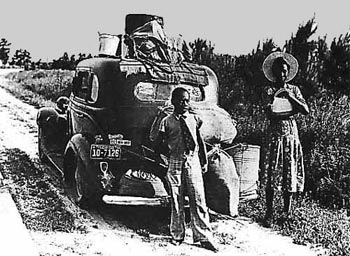 Adding to the diversity were the early 20th-century migrations of African-Americans to Cleveland, seeking the opportunities denied them in a south constricted by Reconstruction and later Jim Crow. This wholesale migration, following the rail lines north, established in Cleveland what scholar Kimberly Phillips called “Alabama North,” in her award-winning 1999 book of that name, describing the impact of this migration chain. It indelibly affected neighborhoods from Central to Mount Pleasant. More than half of all southern blacks in the Great Migration northward in 1916–1918 came to just five cities, Phillips writes—Cleveland, Chicago, Detroit, New York, and Pittsburgh.
Adding to the diversity were the early 20th-century migrations of African-Americans to Cleveland, seeking the opportunities denied them in a south constricted by Reconstruction and later Jim Crow. This wholesale migration, following the rail lines north, established in Cleveland what scholar Kimberly Phillips called “Alabama North,” in her award-winning 1999 book of that name, describing the impact of this migration chain. It indelibly affected neighborhoods from Central to Mount Pleasant. More than half of all southern blacks in the Great Migration northward in 1916–1918 came to just five cities, Phillips writes—Cleveland, Chicago, Detroit, New York, and Pittsburgh.
African-Americans brought with them their southern customs, cooking, music, and values, including a focus on the church and family as the center of the community. they also made Cleveland a locus of black intellectual life, ranging from author Charles Chestnutt, born in Cleveland in 1858, to Langston Hughes, who in the early part of the 20th century boarded in a number of homes on the east side of Cleveland, as he worked for his education.
But by 1915, reversing earlier, more liberal trends, black migrants to Cleveland faced a backlash of intense prejudice in finding homes, jobs, and cultural and educational acceptance. unlike the assimilation efforts aimed at most immigrants, African-Americans faced closed doors and extreme segregation, from beaches to neighborhoods, schools, and educational avenues of mobility. The effects of this segregation remain painfully apparent to this day in the many Cleveland neighborhoods that are more than 95 percent African-American.
Cleveland’s ethnic enclaves also boiled with rivalries that reflected conflicts in home countries. These were seen in Cleveland Slovaks’ successful 1902 veto of the Hungarian community’s attempt to build a statue on Public Square honoring Hungarian nationalist Lajos Kossuth—the statue was built at University Circle instead. Slovaks had successfully mobilized against the monument by lobbying many of the Cleveland region’s Slavs, whose countrymen had been absorbed into the Austro-Hungarian Empire.
Immigrant Jews of German origin who favored more liberal tenets and assimilation confronted, sometimes uncomfortably, newer arrivals from Eastern Europe with more conservative religious notions, and deeper social needs.
Serbian Orthodox Christians split down the middle into an anti-Communist church that opposed anything emanating from then-Communist Yugoslavia and those who still looked to the home-country church for guidance. This split was resolved only by the wave of Serbian Nationalism that arose during the 1990s Yugoslav wars.
In the America of the early 21st century, immigration has become a negative word, often paired with the adjective “illegal.”
Yet this attitude obscures the real trends in U.S. immigration, ignores the stabilizing, family-friendly, and entrepreneurial nature of most immigrants, and diminishes the positive impact that immigrants can make, especially in communities such as Philadelphia that have worked hard to attract well-educated, well-heeled immigrants, who can make an immediate economic difference.
Recent studies of immigration trends by think tanks as diverse as the conservative Hoover Institution and Rand Corporation and the liberal Brookings Institution suggest that only in states such as California that are overwhelmed by very poor immigrants with low educational attainment has immigration become a net drain on the economy. One inference from these findings is that a smarter economic strategy would be to do more to erase discrimination and to lift other barriers to productive employment for these poorer immigrants, including a greater investment in education, thereby making them net contributors.
Yet immigration is changing. In many if not most U.S. cities, the studies suggest, a new generation of what might be called new-economy immigrants is expanding economic opportunities for all residents by creating new companies, revitalizing neighborhoods, driving the new innovation economy, and attracting investments from overseas.
So even as the stereotypical view persists that immigrants take jobs from native citizens, immigration is changing fundamentally into a value-added proposition.
The Brookings studies in particular suggest that post-1990 immigration has drawn educated immigrant groups not just to cities such as Philadelphia, Boston, and Indianapolis, which have specific programs to lure them, but also to Cleveland, where the city’s emerging power in biotech and affordable neighborhoods close to Cleveland State University and Case Western Reserve University have attracted clusters of highly-educated immigrant Indians, Chinese, and others.
Immigrants within these clusters then lure other immigrants to provide the food and services they crave. And these new-economy immigrants, initially drawn by educational opportunities, later team to start their own firms, including the next generation of high-tech startups.
In the 2000 census, the Cleveland neighborhood with the highest percentage of foreign-born residents—14.5 percent—was the University Circle area around CWRU, the Cleveland Clinic, and University Hospitals. (the top five non-native nationalities living there were Chinese, Indian, Russian, Japanese, and Thai, in that order.) More than three-quarters of this population had immigrated since 1990, in contrast with the city’s older immigrant neighborhoods, such as south Collinwood, where 41 percent of the foreign-born arrived before 1965.
In marked contrast with their 19th-century counterparts, these new-economy immigrants tend to think globally in how they see their roles, their firms, and their personal opportunities. that’s certainly true of Japan-born, CWRU-educated physicist Hiroyuki Fujita, who in 2006 started Quality Electrodynamics LLC in his CWRU lab, making parts for Magnetic Resonance Imaging machines. Now headquartered in Mayfield Village, QED is one of the Cleveland region’s biotech success stories. Yet Fujita didn’t draw inspiration from the old Cleveland manufacturing system. Instead, as he told Mary Vanac of Cleveland’s Medcity News in a 2010 interview, he drew the model for his firm from one of Japan’s early globalists, the entrepreneur-philanthropist Kazuo Inamori, who in 1959 founded a Kyoto ceramics company that was to become the electronics giant Kyocera.
Brookings studies of the impact of such immigrants suggest that the communities that are best able to attract and retain new-economy migrants will see a huge economic spinoff in job creation and innovation. These impacts can happen organically, but Brookings notes that Philadelphia has greatly accelerated them, using a welcome center to recruit and retain immigrants.
Yet even as Philadelphia and other cities worked hard in recent years to attract immigrants, Cleveland lagged, without the political will and vision to make similar moves, and with Cleveland Mayor Frank Jackson late to the table on the immigration issue. Fortunately the Cleveland area’s Jewish community—which helped assimilate tens of thousands of Russian Jews and has successfully used immigrant ties to israel to attract Israeli medical businesses to locate in Cleveland—in mid-2010 stepped forward with a strategic study and plan to establish an International Welcome Center in Cleveland.
At the same time, immigrant Eddy Zai of Pepper Pike was setting up the Cleveland International Fund to take advantage of a U.S. program that offers green cards, a step toward citizenship, to foreign investors who sink substantial sums in depressed parts of the United States. Zai recruited potential Cleveland investors in countries as diverse as England, India, and China. The result: a $20 million initial investment in 2010 in the Flats East Bank project, a critical component of that project’s financing. Zai expected to pull together millions more in immigrant investments for that East Bank redevelopment as well as for health-care opportunities, real estate, and movie-making efforts in Cleveland.
Zai’s personal story of immigrant success may, unfortunately, have been necessary to counteract perceptions overseas that Cleveland is not welcoming to immigrants. That view has gained currency in China, in particular, because of the prominent opposition of Cleveland-area politicians such as Senator Sherrod Brown to recent free-trade deals and aspects of U.S. trade relations with China.
These perceptions may be inaccurate—the Cleveland region relies heavily on exports to support tens of thousands of jobs in steel, metalworking, chemical, appliances, large machinery, and other industries, and Brown says he supports free but fair trade. The city continues to welcome immigrants, with the help of the networks of prior immigrants, who tend to form entrepreneurial as well as political and cultural bonds.
However, such perceptions underscore how critical it is for a metropolis to be seen as a player on the international stage—not simply as a place where the barricades are up.
The truth is that Cleveland is competing successfully in the tech-oriented immigrant bazaar, thanks to its biomed and university anchors and the entrepreneurial dollars that have been attracted by state-supported Third Frontier seed money. But how far it has to go was made clear by a recent book, Immigrant, Inc., by Cleveland authors Richard T. Herman, an immigration lawyer, and Robert L. Smith, a Plain Dealer reporter.
Herman and Smith subtitled their 2010 book Why Immigrant Entrepreneurs Are Driving the New Economy (and how they will save the American worker). The authors’ numbers are striking:
• Immigrants make up 12 percent of the total u.s. population but “nearly half of all scientists and engineers with doctorate degrees.”
• Nearly one-fourth of Silicon Valley startups during the computer boom of 1980–1998 were started by immigrants from India and China.
• Immigrants helped launch an astounding 25 percent of all new technology and engineering firms nationwide from 1995 to 2005. That figure was higher in California (39 percent), new Jersey (38 percent), and Massachusetts (29 percent). In Ohio, it was 14 percent.
• In 2006, noncitizen immigrants were listed as inventors or co-inventors of 24 percent of U.S.-filed international patent applications. That compared with 7 percent in 1998.
Herman and Smith contrast Cleveland City Hall’s closed door to immigration policy with the open door of Philadelphia, which “welcomed 113,000 immigrants between 2000 and 2006,” while Cleveland lost “another 7 percent of its population and became almost entirely native-born.”
Fortunately, the Brookings studies suggest that cities can quickly alter their immigration profile through astute policies.
In this regard, Cleveland, where many pre-1965 immigrants retain ties to the “old country,” has assets that other cities do not. In its most vibrant neighborhoods, the city retains the character of an ethnic mixing pot. And diversity can mean a big payoff in neighborhood revitalization.
Cleveland Council Member Matt Zone, for instance, attributes the recent development successes in the Detroit-Shoreway neighborhood that he represents on the West side—the neighborhood that has seen construction of one of the biggest concentrations of new housing in Cleveland, and the advent of trendy eateries and restored theaters as part of the Gordon Square Arts District—to planners’ efforts to retain economic, racial, and ethnic diversity. A small Italian neighborhood complete with backyard bocce courts exists side-by-side with upscale homes for young professionals. Subsidized housing was included in the planning, and the neighborhood should get a further boost by plans to turn the West Shoreway into a more pedestrian and bike-friendly mall, with easier access to the Lake Erie shorefront.
No major ethnic or racial group dominates in Detroit-Shoreway, with 23 percent of residents listing Hispanic heritage, 18 percent African-American, 13 percent Irish, 12 percent German, and 7 percent Italian in the 2000 census. And the neighborhood continues to attract immigrants—with more than 1,000 foreign-born residents as of 2000, the largest numbers from Romania, Mexico, Italy, Guatemala, and Nicaragua.
Immigrants don’t just seed new businesses. They’re also are a key driver of population growth—highly desirable in an advanced industrial nation such as the United States that has a low birth rate, since it helps assure that jobs will be filled by working-age people supporting social programs, even as the native-born population ages. The importance of immigration as a population driver was underscored in 2009 when, in part because of declining immigration tied to the Great Recession, the U.S. birthrate dipped to its lowest level in at least a century, 13.5 births for every 1,000 people.
In 1900, according to the Brookings Institution, Cleveland was the nation’s fifth most important immigrant gateway city, with nearly 33 percent of its population foreign-born.
In 2006, it wasn’t even in the top 10. But that can change. Philadelphia—the country’s third largest immigrant gateway in 1900—initially fell as fast and as hard as Cleveland, to become another rusty former gateway and aging industrial city fallen on tough times. Yet Philadelphia changed that trajectory through policies focused on attracting immigrants to revitalize neighborhoods and seed jobs, doubling its foreign-born population after 1970, with 45 percent growth in the 1990s alone.
Cleveland can do the same—or better, building on assets it already has. It not only can, it must. Immigration isn’t a negative word. It’s a word that spells opportunity, growth, jobs, and the future. It has done that for Cleveland before. It can do so again.
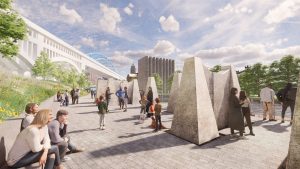

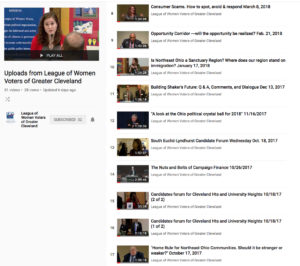
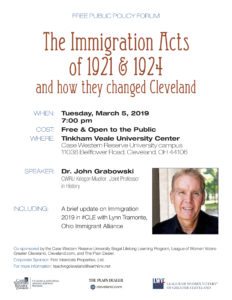
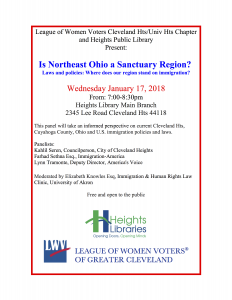
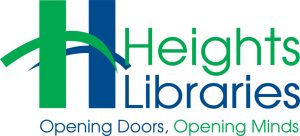






 So, too, the progenitors of Cleveland’s diverse button-box accordion and polka music, with Polish, Italian, Czech, German, and Croatian styles, but whose most important heir was
So, too, the progenitors of Cleveland’s diverse button-box accordion and polka music, with Polish, Italian, Czech, German, and Croatian styles, but whose most important heir was  Adding to the diversity were the early
Adding to the diversity were the early